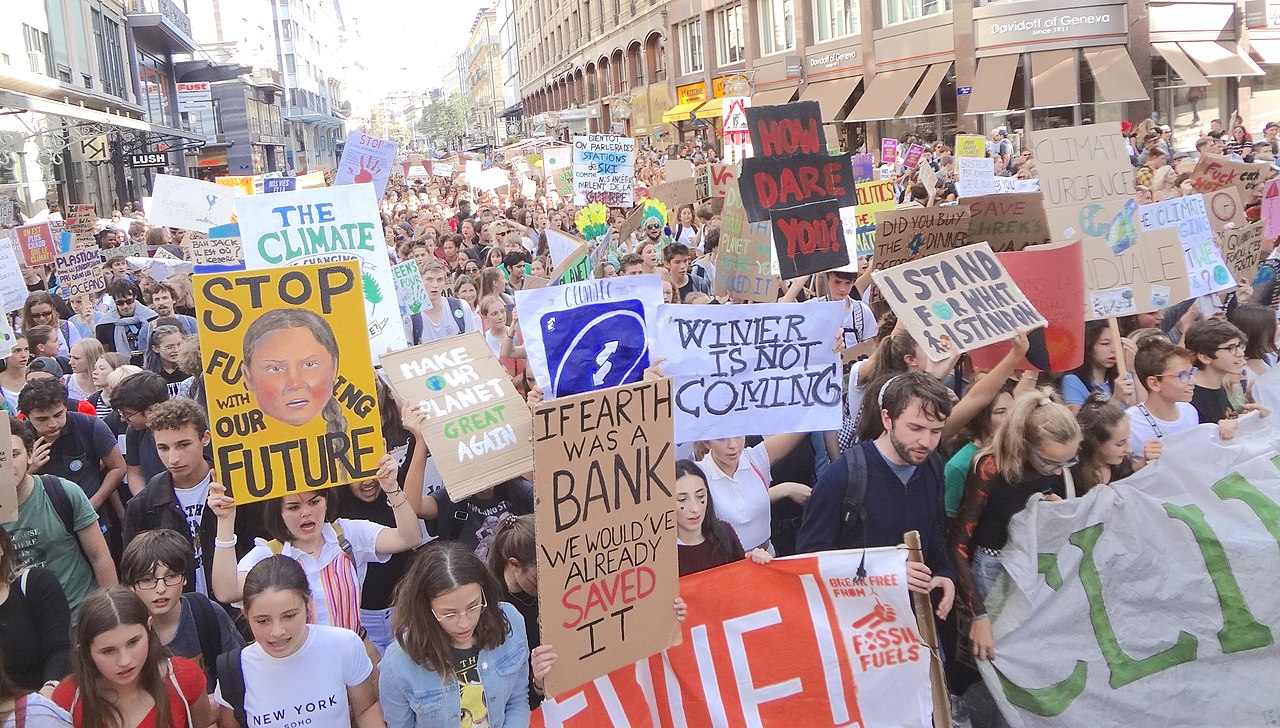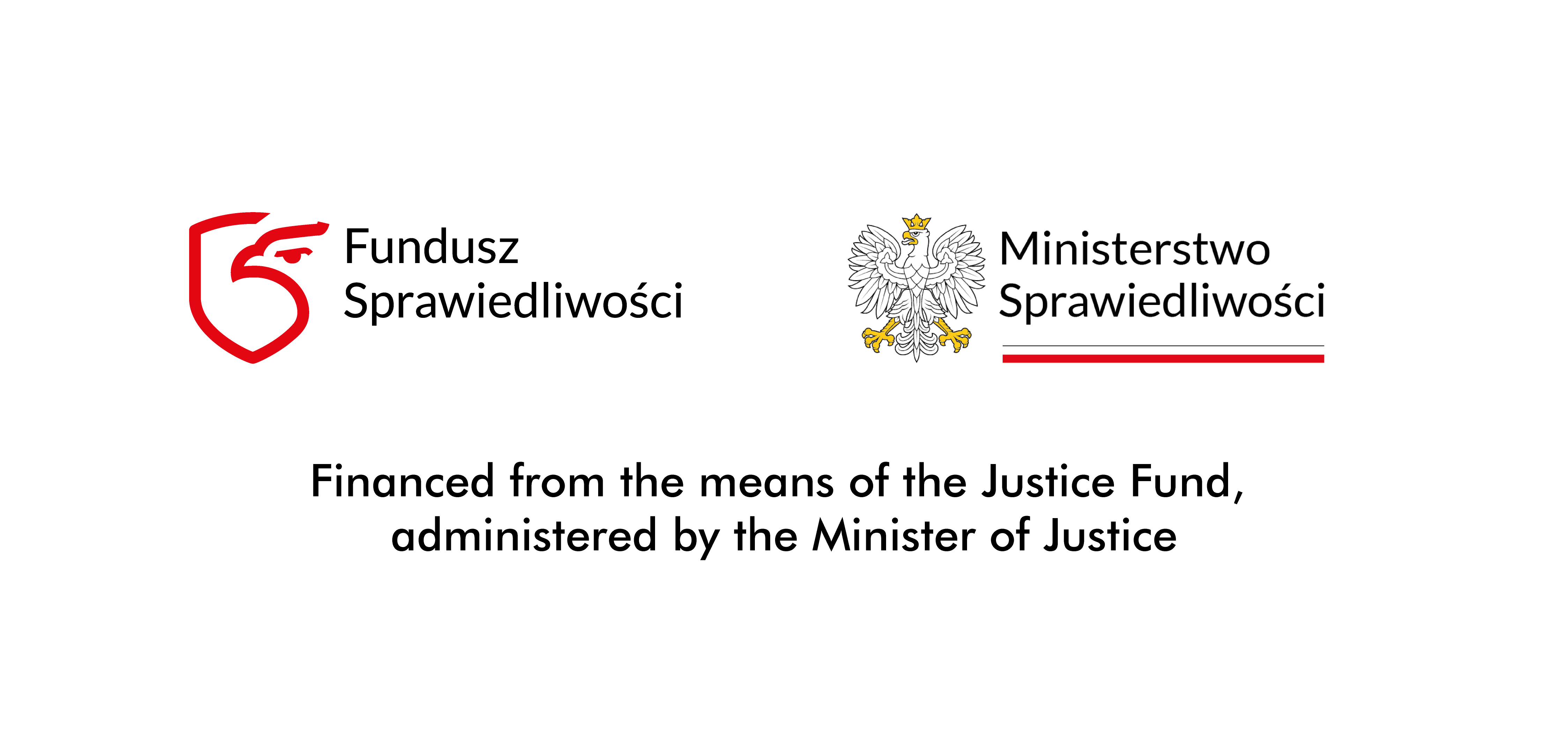The real cost of Fit for 55: will we be able to bear it?

The costs of the climate transition designed by the EU and implemented in Poland will prove astronomical. They will primarily hit the poorest sections of society, as well as small and medium-sized enterprises
Tomasz Grzegorz Grosse
How great will the burden of climate transformation be in Poland? Estimates vary widely here. Even before the outbreak of full-scale war in Ukraine, they were estimated at 240 billion euros by 2030, twice the EU average1. In turn, according to the forecasts of economists of Pekao Bank, the implementation of climate goals by 2030 was expected to involve more than 527.5 billion euros, and the gap between the projected revenues of the state budget from ETS emission permits and EU financial support, and the expenses from the Polish side would be at least 300 billion euros2. Without EU support, the cost of Poland’s climate transition, according to the same assessments, must have amounted to at least 400 billion euros, or about 1.8 trillion zlotys.
Other researchers argued that the support of EU funds for Poland until 2030 was to amount to only about 5% of total spending3. Given that the Commission blocked almost all aid funds allocated to Poland after 2021, including for climate transformation, it was naïve to count on EU support in this regard. Nevertheless, even if they did in fact flow to our country, the vast majority of the resulting burden of the climate transition would have to be borne by the state budget, as well as by local businesses and consumers. It is not difficult to predict that this could lead to serious economic disruption, a decline in the competitiveness of the Polish economy, as well as social discontent. It could also cast serious doubts over Poland’s future membership in the EU.
“Quasi-tax”
The European Union has a specific system of financial penalties or a “quasi-tax” imposed on greenhouse gas emitters, the so-called emissions trading system (ETS). This is an example of perhaps the most important difference between climate policy in the EU and the US. The Americans have not introduced an ETS-like system, and instead of financial penalties, they use tax incentives, i.e. rebates designed to induce climate investment and emissions reductions. In the case of the EU, the cost of the climate transition is all the more difficult to estimate because the price of emission permits is unstable. At the same time, it is steadily rising and thus inflationary. Only at the beginning of 2021, it did not exceed 40 euros per ton, while a year later it was already around 100 euros per ton4. A large part of the increase in this price was due to the actions of financial speculators, who found in this way a reliable source of their own income. Brussels did not agree to Poland’s demands that the emissions trading scheme be exempted for financial speculators, as well as that it be suspended (or at least set an upper price ceiling on allowances) for the duration of the energy crisis. According to the philosophy of the EU institutions, “the higher the price of ETS permits, the better for the climate.” That’s why the Green Deal introduced changes to emissions trading. They assume the phasing out of free emission allowances between 2026 and 2034. What’s more, the ETS has been expanded in accordance with the “Fit for 55” to include the construction, automotive, aviation, and maritime transport sectors (this new segment is referred to as ETS2).

The referenced estimates by Pekao Bank economists put the cost of extending the ETS to the construction and transport sectors in Poland at roughly EUR 25 billion (about PLN 110 billion)5. However, the level of costs depends on the price of allowances on the financial markets. One analysis estimates that if investors raise the rate, the price of extending the ETS to transport and construction could rise to as much as PLN 7,100 for each Polish household in 20306.
Using this example, it can be seen that the costs of the climate transition being introduced in Poland will hit the poorest sectors of society first and foremost, as well as small and medium-sized enterprises. The consequence of higher energy and fuel prices resulting from the ETS2 will be more expensive consumer and food goods, which will reduce the disposable income of Polish households and lower their standard of living. “The EU’s climate policy will also increase the cost of food production, due to the increase in the price of gas (ETS, the Methane Directive, and the imposition of the ETS on maritime transport, i.e. also the supply of LNG), used in the production of fertilizers.7” Thus, climate policy, combined with the energy crisis and Russian aggression against Ukraine, leads to great economic risks, including food, especially for the poorest Poles.
The total cost of implementing EU climate policy does not close to 527.5 billion euros, or about 2.4 trillion zlotys. This is because Bank Pekao’s expert estimate does not fully take into account two important items that may generate additional burdens. They concern investments in nuclear power and the cost of bringing buildings up to the energy efficiency standards introduced by European law.
For example, the draft directive on the energy performance of buildings8 requires all newly constructed public and private buildings to be zero-emission (from 2027 this applies to public buildings, and from 2030 to others). It requires existing buildings to undergo costly retrofit work that will upgrade their energy performance class toward energy efficiency and low-emission. In this way, every building owner in Poland will have to make an emissivity assessment and obtain a so-called energy passport, and under the threat of severe penalties will have to carry out technical upgrades within a certain period of time. Sometimes this will result in a complete change of heat and energy supply. The energy passport will affect the price of the property, and the retrofit costs may be so great that the owners will not be able to meet them, or there will be no point in incurring such costs for some properties. Other EU documents force the installation of solar power on every residential, commercial and public building9.
Accumulating expenses
Ultimately, the Energy Performance of Buildings Directive plans to completely phase out fossil fuels from heating and cooling of buildings by 2039.This will have consequences not only for property owners, but also for utilities and district heating, and thus will force in practice a much faster transition to a zero-carbon economy than in 2050. This is combined with a shorter climate transition period, and thus cumulative spending over time.
According to Poland’s long-term building renovation strategy, the total investment required between 2021 and 2050 will amount to PLN 1.54 trillion10. These will be costs allocated for deep thermo-modernization bringing properties up to the standard of low energy demand [less than 50 kWh/(m2-yr) of primary energy] and for replacing heat sources with emission-free ones. Experts of the Lewiatan Confederation estimate that by 2030, thermo-modernization of residential and public buildings will require 400 billion zlotys of investment costs11. After that, expenditures will increase even more. They will be borne by property owners – households, public authorities and entrepreneurs – probably with some help from the state. At the very end, however, they will be the costs of all taxpayers.

One of the problems of the climate transition is that it cannot be based solely on renewable energy sources. According to some experts, Poland can seamlessly increase the share of RES from 21% in 2022 to about 32% in the following years. However, an increase to 50% is already an unrealistic option, as it would involve huge investment outlays while underutilizing production potential of 20 even up to 34%12. That’s roughly how much would be the excess supply of energy from RES during peak production periods, which could probably not be used in any way. In order to achieve system security, it is therefore necessary to rely on other sources of energy or on energy purchases from neighbors, although the latter solution is fraught with serious risks. The country’s security therefore requires replacing coal and gas with other stable energy sources, such as nuclear power plants. Meanwhile, the initial cost of the large nuclear power plants currently planned in Poland, as well as dozens of small ones (so-called SMRs), is estimated at more than PLN 1 trillion13.
Other alternative energy or heating technologies are also costly, though less so than nuclear power. They are also safer, as they are based exclusively on Polish resources and raw materials. This includes underground coal combustion and deep geothermal or rock energy extraction installations. In the case of deep geothermal energy, German wells were each estimated at about 80 million euros14, Italian installations at about 175 million euros15.
Climate policies give rise to further costs. They stem from the bureaucratic approach of the Brussels elite, as well as the ideological belief that climate ideologies should be imposed on the entire society and enforced in all spheres of human activity. Hence, huge reporting burdens are being imposed on businesses to implement the Union’s climate ambitions, among other things. An example is the expanded Corporate Sustainability Reporting Directive (CSRD)16. The directive on this issue imposes disclosure obligations on some 3,650 Polish companies, 22 times more than before. Reporting will be very labor-intensive, and therefore expensive. The reporting standards contain more than 1,100 items where a company must provide information17. Directly affected companies will incur a cost of between PLN 1.4 billion and PLN 2.6 billion each year. In addition, they will incur a one-time cost of between PLN 0.8 billion and PLN 1.1 billion to comply with this regulation. The directive also entails reporting costs at contractors of companies directly covered by the reporting standards. On a national scale, this means costs of 8 billion zlotys a year and about 1.4 billion zlotys in one-time costs for implementing the regulations18. Thus, this is another burden for many smaller Polish businesses resulting from EU climate policy, as well as a bureaucratic constraint on the competitiveness of the Polish economy.
A task for Polish elites
In conclusion, it should be recognized that the costs of the climate transformation designed by the EU and implemented in Poland will be astronomical. They will amount to between 4 and 5 trillion zlotys (or about 1 trillion euros), although they may still rise. This analysis does not include, for example, expenses related to the spread of electric cars. A drawback of the EU project is the deep asymmetry between the costs incurred in Poland and Western European countries. The latter are better prepared for this transition, generally richer than the Poles, as well as having many technologies and equipment that they intend to sell to the Polish side. All this makes the EU’s climate agenda unfair to countries like Poland. It can severely limit the competitiveness of the economy. It leads to the impoverishment of society and the collapse of many local businesses.
Therefore, the Polish elite will have to thoroughly rethink the strategy for implementing the “Fit for 55” program, as well as Poland’s existing rules for functioning in the EU. For it should be borne in mind that, given the threat of Russian imperialism, public investments in the development of the country’s arms industry and defense capabilities will be essential. They will certainly take priority over the requirements of EU climate policy. Therefore, the pace of implementation of some of the requirements of this policy will slow down. Some requirements may have to be abandoned or suspended for a time. This may lead to the need to renegotiate them with EU partners. Especially since the “Fit for 55” package affects the choice between different energy sources and the overall structure of energy supply, which, according to Article 192 of the TFEU, requires unanimity among member states.
In addition, Poland’s climate strategy should take greater care of its energy and economic security, and thus rely primarily on domestic resources and raw materials. It should support Polish innovation and the development of domestic technologies and their producers. The implementation of such a climate strategy can then lead to the strengthening of the Polish economy and its export competitiveness.

1 D. Ciepiela, Koszt transformacji energetycznej Polski do 2030 r. to 240 mld euro, wnp.pl, https://www.wnp.pl/energetyka/koszt-transformacji-energetycznej-polski-do-2030-r-to-240-mld-euro,401110.html [27.12.2021].
2 Wpływ pakietu Fit for 55 na polską gospodarkę, Bank Pekao, Grudzień 2021, https://www.pekao.com.pl/dam/jcr:4e058ebf-005f-4333-8753-0b6bddefb7e8/Pekao%20-%20Wp%C5%82yw%20Fit%20for%2055%20na%20polsk%C4%85%20gospodark%C4%99%20-%20final.pdf [27.05.2023], s. 3.
3 W. Mielczarski, Koszty transformacji energetycznej w Polsce (ANALIZA), 7 lutego 2022, biznesalert.pl, https://biznesalert.pl/mielczarski-koszty-transformacji-energetycznej-w-polsce-analiza/ [27.02.2022].
4 C. Bachański, Unia Europejska przed przepaścią, Warsaw Enterprise Institute, Warszawa, 1 czerwca, 2023, https://wei.org.pl/2023/aktualnosci/cezary-bachanski/unia-europejska-nad-przepascia/ [27.06.2023].
5 Wpływ pakietu Fit for 55 na polską gospodarkę, op. cit., s. 3
6 M. Lachowicz, Zapłacą najubożsi. Koszty wprowadzenia systemu handlu emisjami dla budynków mieszkalnych oraz transportu, Warsaw Enterprise Institute, Warszawa 2023, https://wei.org.pl/2023/publikacje/raporty/admin/raport-zaplaca-najubozsi/ [27.06.2023].
7 M. Lachowicz, Zapłacą najubożsi… op. cit., s. 11
8 Dyrektywa Parlamentu Europejskiego i Rady w sprawie charakterystyki energetycznej budynków, Bruksela, dnia15.12.2021, COM(2021) 802 final, 2021/0426(COD).
9 Strategia UE na rzecz energii słonecznej, Komisja Europejska, Bruksela, dnia 18.5.2022 r., COM (2022) 221 final.
10 Długoterminowa strategia renowacji budynków. Wspieranie renowacji krajowego zasobu budowlanego, Warszawa, 2022 (Załącznik do uchwały nr 23/2022 Rady Ministrów z dnia 9 lutego 2022 r.).
11 Efektywność energetyczna budynków – szanse i wyzwania dla polskich firm, Warszawa, lipiec 2022, https://lewiatan.org/wp-content/uploads/2022/09/efektywnosc_energetyczna_budynkow_OK.pdf [27.06.2023], s. 77.
12 W. Mielczarski, Jedna literka przesądzi o porażce OZE w Polsce, Biznesalert.pl, 16 stycznia 2023, https://biznesalert.pl/oze-energia-polityka-europa-polska-energetyka/ [27.06.2023].
13 B. Oksińska, Niebotyczne koszty budowy elektrowni jądrowych. Oto najnowsze wyliczenia, Business Insider Polska, 24 kwietnia 2023, https://businessinsider.com.pl/biznes/niebotyczne-koszty-budowy-elektrowni-jadrowych-oto-najnowsze-wyliczenia/yx13ejc [27.06.2023]
14 Silenos Energy secures project financings for Bruck geothermal project, Germany, https://www.thinkgeoenergy.com/silenos-energy-secures-project-financings-for-bruck-geothermal-project-germany/ [27.05.2023].
15 Initial power plant – Tuskany / Italy. Technology, History, Development, Project and Opportunities for Europe, VISTON UNITED Swiss AG, St. Gallen 2019.
16 Dyrektywa Parlamentu Europejskiego i Rady (UE) 2022/2464 z dnia 14 grudnia 2022 r. w sprawie zmiany rozporządzenia (UE) nr 537/2014, dyrektywy 2004/109/WE, dyrektywy 2006/43/WE oraz dyrektywy 2013/34/UE w odniesieniu do sprawozdawczości przedsiębiorstw w zakresie zrównoważonego rozwoju, PE/35/2022/REV/1, OJ L 322, 16.12.2022, pp. 15–80.
17 D. Olko, Pod ciężarem ESG. Koszty raportowania ESG dla małych i średnich firm w Polsce, Warsaw Enterprise Institute, Warszawa 2023, https://wei.org.pl/wp-content/uploads/2023/04/Pod-ciezarem-ESG.pdf [27.06.2023].
18 D. Olko, Pod ciężarem ESG… op. cit., s. 6.



